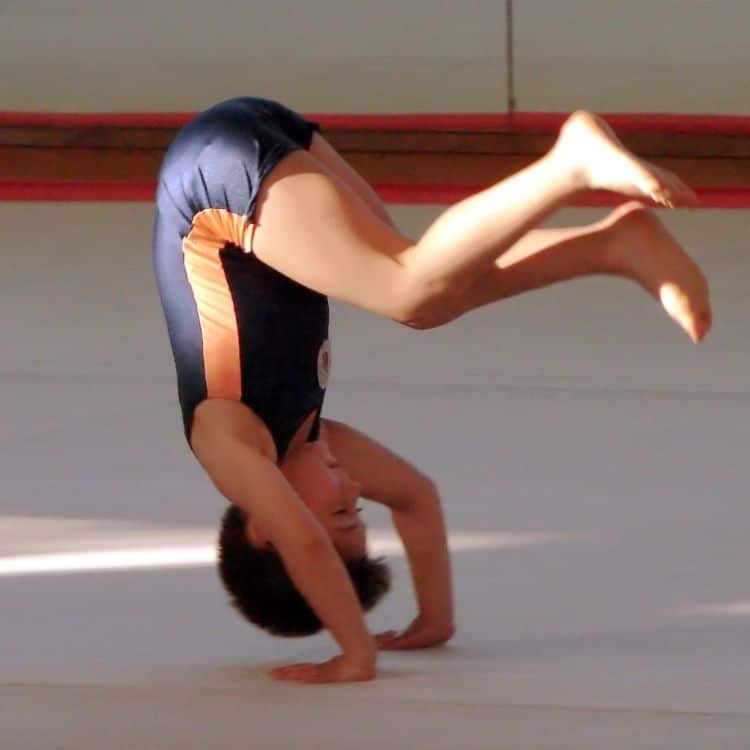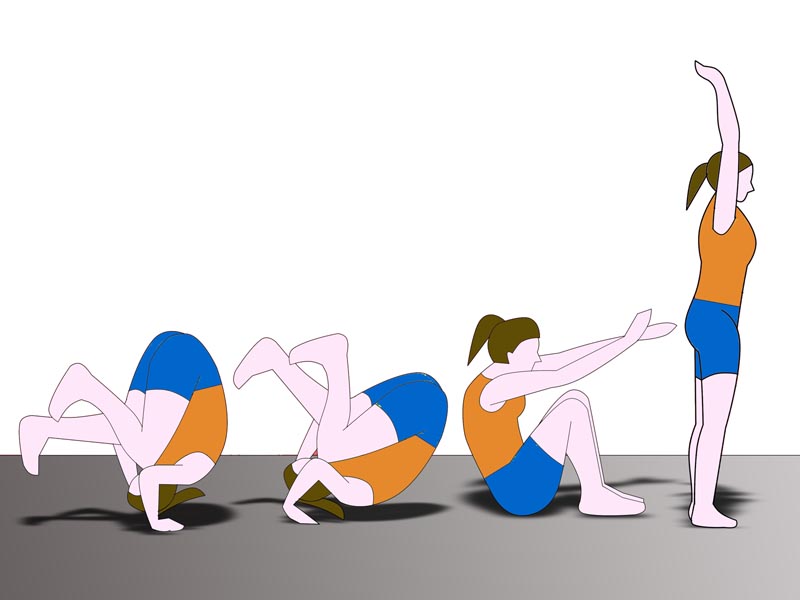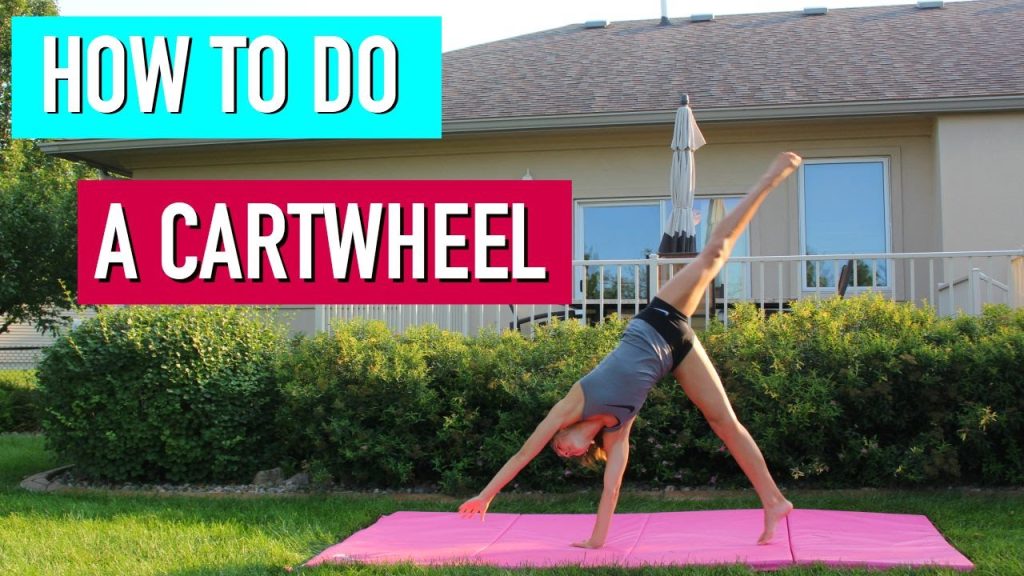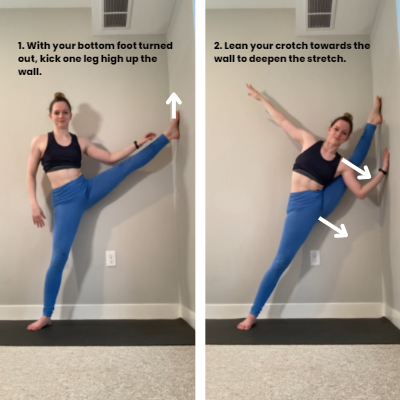Want to learn how to do a forward roll in gymnastics? It’s a basic but essential skill.
This guide will help you master it step by step. The forward roll is a fundamental move in gymnastics. It builds strength, flexibility, and coordination. Whether you’re a beginner or looking to refine your technique, understanding the steps is crucial.
This move is not only fun but also the foundation for more advanced skills. By the end of this guide, you’ll know how to perform a forward roll with confidence and ease. Get ready to roll into your gymnastics journey!

Credit: www.synergygymnastics.co.uk
Introduction To Forward Roll
The forward roll is one of the most basic skills in gymnastics. It is often the first move gymnasts learn. The forward roll helps build strength, flexibility, and coordination. It is a fun way to start a gymnastics journey.
Basics Of Forward Roll
Performing a forward roll is simple. Follow these steps:
- Stand straight with your feet together.
- Stretch your arms above your head.
- Bend forward and place your hands on the mat.
- Tuck your chin to your chest.
- Push off with your feet and roll over your head.
- Finish by standing up straight.
Remember to keep your body tight and use your core muscles. Practice on a soft surface to avoid injury.
Benefits Of Forward Roll
The forward roll offers many benefits:
- Improves balance: Rolling forward helps you learn to control your body.
- Builds strength: It strengthens your arms, legs, and core muscles.
- Enhances flexibility: Stretching and rolling improve your flexibility.
- Boosts coordination: It helps you coordinate your movements.
Practicing forward rolls can also boost confidence. It is a great skill for beginners and helps build a strong foundation in gymnastics.
Warm-up Exercises
Before attempting a forward roll in gymnastics, warming up is crucial. Proper warm-up exercises prepare your body for the physical activity ahead. Warm-up exercises reduce the risk of injuries and improve performance. Let’s dive into the importance and some effective routines for warming up.
Importance Of Warming Up
Warming up increases blood flow to your muscles. This helps reduce stiffness and increases flexibility. It also raises your heart rate gradually, preparing your body for the workout. A good warm-up can improve your overall performance. It sets the stage for safer, more effective exercise.
Effective Warm-up Routines
Start with some light cardio exercises. Jog in place for five minutes. Jumping jacks are also a great option. Next, move on to dynamic stretches. Arm circles, leg swings, and torso twists work well. These help loosen up your joints and muscles. Finally, include some specific stretches for your wrists and ankles. These areas are crucial for gymnastics moves like the forward roll.
Starting Position
Embarking on the journey of learning a forward roll in gymnastics begins with mastering the starting position. This initial stance is crucial for a smooth and safe roll. Let’s break down the components of the starting position into two main parts: the correct stance and hand placement.
Correct Stance
The correct stance sets the foundation for your forward roll. Stand with your feet shoulder-width apart. Your toes should point forward. Bend your knees slightly to lower your center of gravity. This stance provides balance and stability.
Keep your back straight but relaxed. Engage your core muscles to maintain this position. Your head should be neutral, looking straight ahead. Avoid tilting your head up or down. This will help you maintain balance and control.
Hand Placement
Proper hand placement is key to a successful forward roll. Begin by raising your arms above your head. Your arms should be straight but not stiff.
Next, bring your hands down to the floor. Place your palms flat on the ground, shoulder-width apart. Your fingers should point forward. Spread your fingers slightly to create a stable base.
Keep your elbows slightly bent. This will help absorb the impact as you roll. Ensure your hands are firmly planted on the floor before proceeding with the roll.
By focusing on the correct stance and hand placement, you set yourself up for a smooth and controlled forward roll. These elements are fundamental to mastering this basic gymnastics skill.

Credit: www.synergygymnastics.co.uk
Initiating The Roll
Learning how to do a forward roll in gymnastics starts with the basics. Initiating the roll is crucial. It sets the stage for a smooth and safe roll. Follow these steps to begin your forward roll successfully.
Tucking The Chin
The first step in a forward roll is tucking your chin. This action protects your neck. It also helps guide your body in the correct direction. To tuck your chin, follow these steps:
- Stand with feet together.
- Bend your knees slightly.
- Bring your chin to your chest.
Keeping your chin tucked ensures that your head does not hit the ground. This is very important for safety and proper technique.
Engaging Core Muscles
Next, focus on engaging your core muscles. Your core provides stability and control. This makes the roll smoother and more controlled. To engage your core:
- Tighten your abdominal muscles.
- Keep your back straight.
- Focus on keeping your core tight throughout the roll.
A strong core prevents injuries and improves your overall performance. Engaging your core also helps maintain a straight line during the roll.
By mastering these initial steps, you set yourself up for success. Remember to tuck your chin and engage your core. These actions are key to a safe and effective forward roll in gymnastics.
Rolling Motion
Performing a forward roll in gymnastics involves a smooth rolling motion. This motion helps you move gracefully and safely. Understanding the key elements can make your forward roll seamless and effective.
Using Momentum
Momentum is essential for a successful forward roll. Start by squatting down and placing your hands on the floor. Push off with your legs to create forward movement. Tuck your chin to your chest to help guide your body into the roll. Use your hands to control the speed and direction of the roll.
Maintaining Body Alignment
Keeping your body aligned is crucial during the roll. Ensure your back is rounded to protect your spine. Keep your legs together and your toes pointed. This alignment helps maintain balance and reduces the risk of injury. Focus on a smooth, continuous motion.
Finishing The Roll
The forward roll is a fundamental skill in gymnastics. Mastering it is crucial for beginners. After executing the roll, the next step is crucial: finishing it properly. This ensures safety and prepares you for other moves.
Landing Safely
As you come out of the roll, keep your chin tucked. This helps protect your neck. Stretch your legs forward and plant your feet firmly on the ground. Bend your knees slightly to absorb the impact. Use your hands for extra balance if needed. Your goal is to end in a controlled squat position.
Balancing Upon Completion
Once you’ve landed safely, focus on your balance. Keep your head up and look forward. This helps maintain your posture. Stand up slowly and keep your core tight. Your arms should extend out to the sides for stability. Practice this until it feels natural and smooth.
Common Mistakes
Learning the forward roll in gymnastics can be challenging. Many beginners make common mistakes that affect their performance. Understanding these errors can help you avoid them and improve your skills.
Incorrect Hand Placement
One of the biggest mistakes is placing hands incorrectly. Your hands should be shoulder-width apart. If they are too wide or too narrow, it disrupts your balance.
- Hands too wide: This can cause you to fall sideways.
- Hands too narrow: This can make it hard to roll smoothly.
To fix this, always check your hand placement before starting the roll. Practicing in front of a mirror can also help ensure your hands are in the right position.
Losing Balance
Another common mistake is losing balance during the roll. This happens when your body is not aligned properly. You might lean too much to one side or not tuck your head properly.
- Keep your head tucked in.
- Maintain a straight line with your body.
Practice maintaining your balance by performing the roll slowly at first. Gradually increase your speed as you become more comfortable with the movement.
Avoiding these mistakes can significantly improve your forward roll in gymnastics. Remember to always practice with proper technique and be mindful of your body alignment.
Tips For Improvement
Improving your forward roll in gymnastics requires dedication and the right techniques. Below are some essential tips to help you enhance your performance and master the forward roll efficiently.
Practicing Regularly
Consistent practice is key to perfecting the forward roll. Set aside time each day to work on your technique. Focus on the following:
- Warm-up exercises to prevent injury.
- Start with simple rolls on a soft surface.
- Gradually increase the difficulty as you improve.
Regular practice helps build muscle memory and confidence. This makes your movements smoother and more precise.
Seeking Professional Guidance
Working with a coach or instructor can significantly improve your skills. They can provide personalized feedback and correct your form. Consider the benefits of professional guidance:
| Benefit | Description |
|---|---|
| Expert Feedback | Coaches can identify and correct mistakes you may not notice. |
| Customized Training | Instructors tailor sessions to your specific needs and skill level. |
| Motivation | Professional guidance keeps you motivated and focused on your goals. |
Seek guidance from a qualified instructor to enhance your technique and progress more quickly.
Safety Precautions
Ensure a clear space free of obstacles. Tuck in your head to avoid neck injuries. Use a soft mat for practice.
Before attempting a forward roll in gymnastics, prioritizing safety is crucial. This ensures a safe and enjoyable experience. It’s essential to take the right precautions to avoid injuries. Here are some key safety measures to keep in mind.Using Proper Matting
Always use gym mats for forward rolls. They provide a soft landing surface. This reduces the risk of injury. Ensure the mats are thick and firm. Arrange them neatly without any gaps. Regularly inspect the mats for damage. Replace worn-out mats promptly.Supervision For Beginners
Beginners should always have supervision. A coach or experienced gymnast can guide them. This ensures correct technique and safety. Supervision helps correct mistakes quickly. It also boosts confidence in learners. Never attempt a forward roll alone as a beginner. “`
Credit: www.youtube.com
Frequently Asked Questions
What Is A Forward Roll In Gymnastics?
A forward roll is a basic gymnastics move. It involves tucking the head and rolling forward. This move helps develop balance and coordination.
How Do You Start A Forward Roll?
Start in a standing position with feet together. Bend down and place hands on the floor. Tuck your head in.
Are Forward Rolls Safe For Beginners?
Yes, forward rolls are safe for beginners. They are simple and low-impact. Always practice on a soft surface.
What Muscles Do Forward Rolls Work?
Forward rolls engage core, shoulder, and leg muscles. They help improve strength and flexibility. Regular practice enhances overall body control.
Conclusion
Learning the forward roll in gymnastics is both fun and beneficial. It builds strength, flexibility, and coordination. Practice each step carefully. Don’t rush. Consistency is key to success. Always perform in a safe environment. With time and effort, you will improve.
Celebrate small victories along the way. Enjoy the process and keep pushing your limits. Gymnastics can be a rewarding journey. Keep rolling forward!



